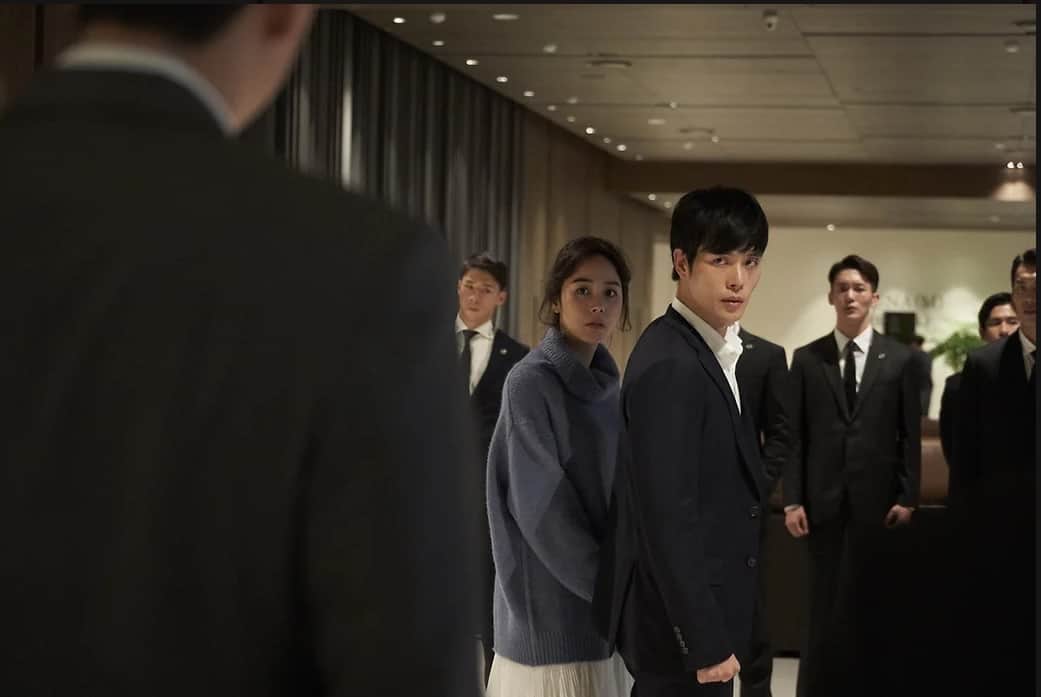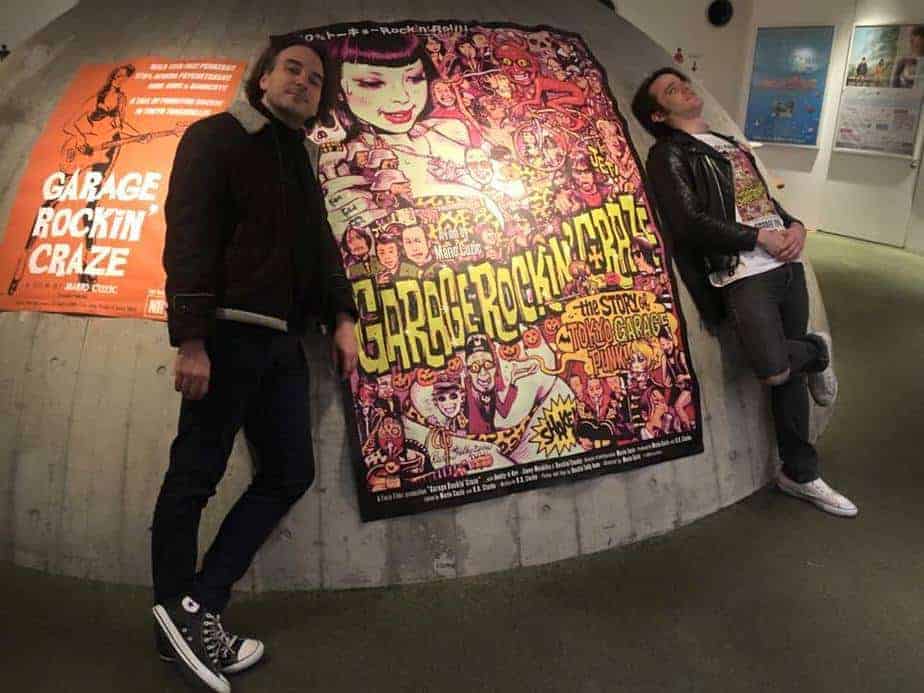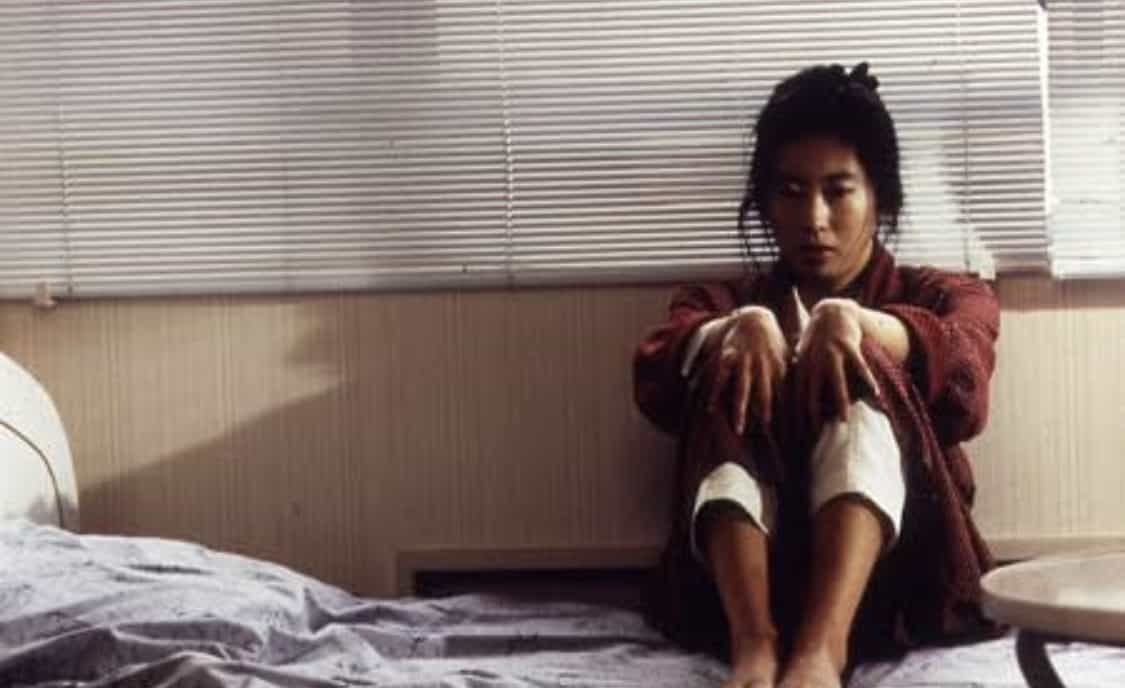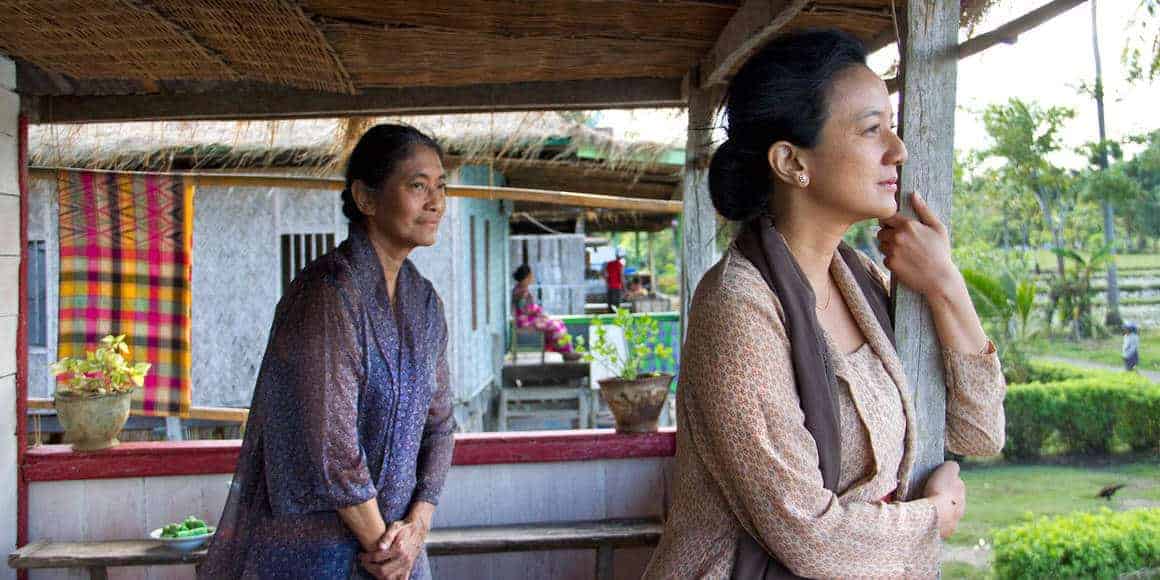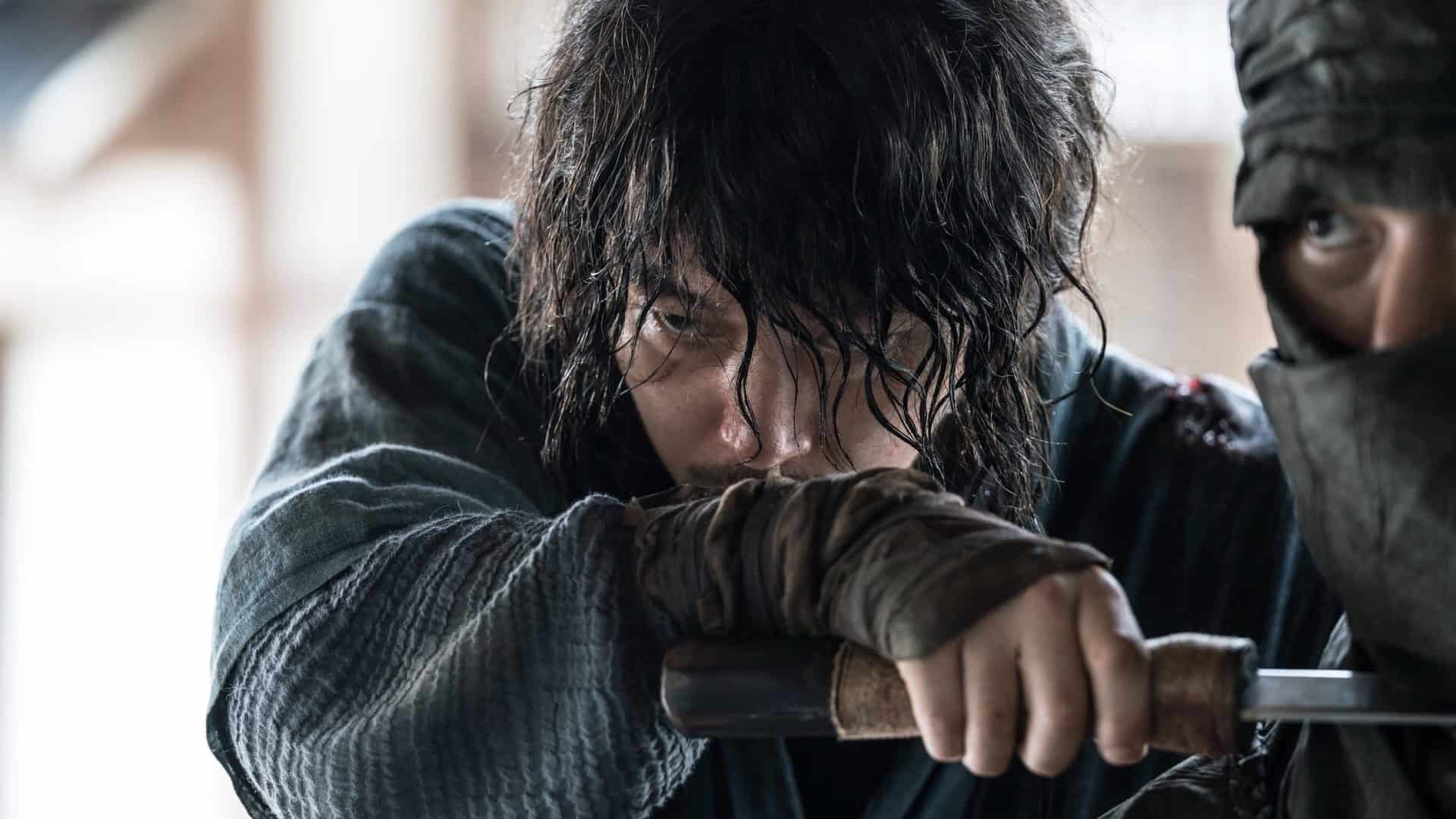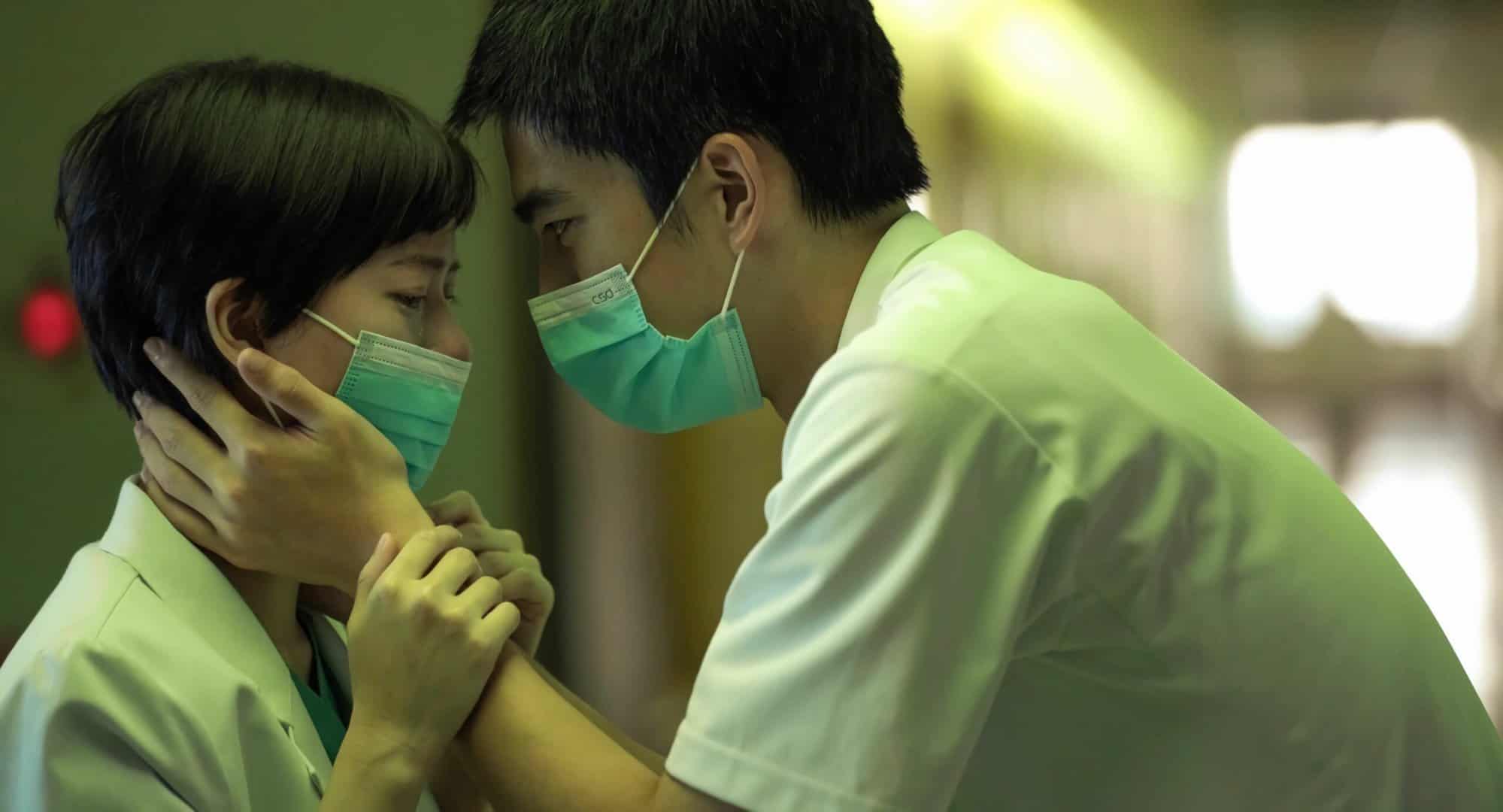Based on “The Honjin Murders”, the debut work of Seishi Yokomizo that was first serialized in 1946 and published in 1973 and the winner of the first Mystery Writers of Japan Award, “Death at an Old Mansion” is another great production by ATG, which was also screened in competition at the 26th Berlinale, in 1976.
The mystery revolves around the wealthy Ichayanagi family, and takes place in an unspecified village in Okayama. The movie begins with the wedding of Kenzo, the family's eldest son, who is marrying a simple primary school teacher, Katsuko Kubo, against the firm protest of the tradition-conscious family, as the later reaction of a drunken uncle eloquently highlights. Suzu, Kenzo's rather beautiful sister is also present and gives an impressive performance playing the koto, but is soon revealed to be mentally handicapped, as she begins to talk about her dead cat as if it was a person. Furthermore, on the morning of the wedding day, an unknown man is seen in the village, with a conspicuous scar on his face and only three fingers on his right hand. He inquires about the house of the Ichiyanagi family and also appears there on the evening of the wedding, where he hands Kenzo a letter, which he proceeds on tearing up.
Early in the morning after the wedding night, screams and then the music of a koto are heard from the family's nearby annexed apartment, which was intended for the newly married couple. The residents rush to the bedroom, only to find the couple dead in a double suicide, with their hands showing three fingers, and a koto lying nearby. The police arrive but cannot make full sense of what is happening, and so Ginzo Kubo, Katsuko's uncle, invites over a friend, detective Kosuke Kindaichi, to solve the case. The young man discovers a series of disturbing facts, which show that the case is much more complicated than it initially appeared.
Check also this interview
Drawing from Sherlock Holmes novels, Yoichi Takabayashi presents a locked room mystery, which is, however, quite innovative cinematically and manages to make a number of sociopolitical comments through its whodunnit approach. Regarding the latter, the concept of the whole “caste” system is immediately highlighted from the wedding scene, actually encompassing the whole narrative, with Rinkichi Kubo and his daughter Katsuko being looked down because the former made his money due to successful entrepreneurship and not by legacy as the Ichayanagis The protests of the latter family regarding the wedding stresses the fact even more, as it becomes clearer as the movie progresses. The concept, which is essentially racism, is also extended to the three finger stranger, who, due to his unknown origins and his scarred face, is immediately perceived as the villain and the prime suspect for the murder, with the three fingers of the two bodies, essentially considered proof of his guilt. Lastly, the place of women in society is also highlighted throughout, with the fact that it is the men that ruled the world being eloquently showcased throughout the movie, eventually becoming part of crime.
While the mystery elements and the search for what has happened dominate the search, essentially bringing Kindaichi in the seat of the protagonist, the character who emerges as the most captivating is definitely Suzu. Her obsession with her dead cat, her prowess in playing the koto, and the fact that no one listens to what she is saying due to her infantile ways, create a rather intriguing portrait in their antithesis, also due to the fact that she is also exceptionally good-looking in a mysterious fashion, and that Kindaichi is the only one who actually pays close attention to what she is saying, after a point at least. Junko Takazawa gives a great performance in the role, functioning as a humanized doll on occasion, while emitting a sense of sensuality with her overall appearance. That Takabayashi and his DP Fujio Morita present her mostly through close-ups intensifies these elements, with her essentially emerging as the most impressive visual aspect of the movie.
And talking about cinematography, Morita captures the suffocating setting the estate and its many rooms provide, with each one becoming part of the mystery actually, additionally highlighting the impressive art direction by Yoshinobu Nishioka, which finds its apogee in the murder scene. Also of note is the way the theories and the flashbacks are presented, with the coloring turning to sepia tones, in an approach that definitely helps with realizing what is happening. The antithesis with the “real” colors when the actual events are portrayed is also exceptional, adding a shock value to the whole case. Toshio Taniguchi's editing is another of the movie's traits, with the gradual revelation of the true nature and actions of the many protagonists being artfully presented, in order to retain the mystery until the finale. The relatively fast pace works nicely for the case, while a special note should also be made on the narration, which adds a very appealing literary sense to the story, while becoming part of the mystery.
Regarding the acting, Akira Nakao as Kindaichi anchors the movie with a very appealing performance that has him appearing both confident in himself (to the point of being smart-ass on occasion) and respectful of the family and the police. Takahiro Tamura as Kenzo appears rather appealingly enigmatic, while Yuki Mizuhara as Katsuko highlights the fact that she is a slave to the men in her life and the patriarchy quite eloquently.
“Death at an Old Mansion” is an impressive whodunit, particularly due to its unique and quite artful approach to the whole concept of the whodunit, and the messages that Takabayabashi manages to present through this rather intricate case.




